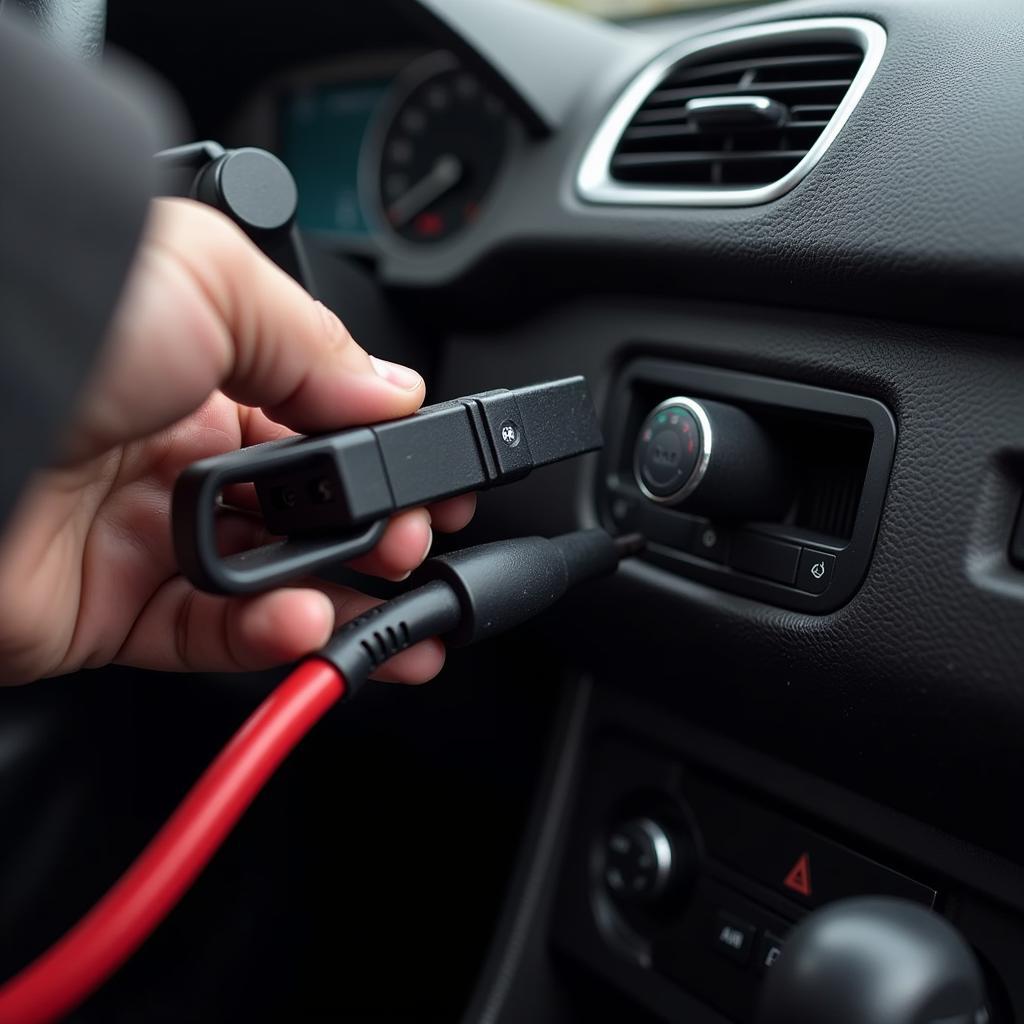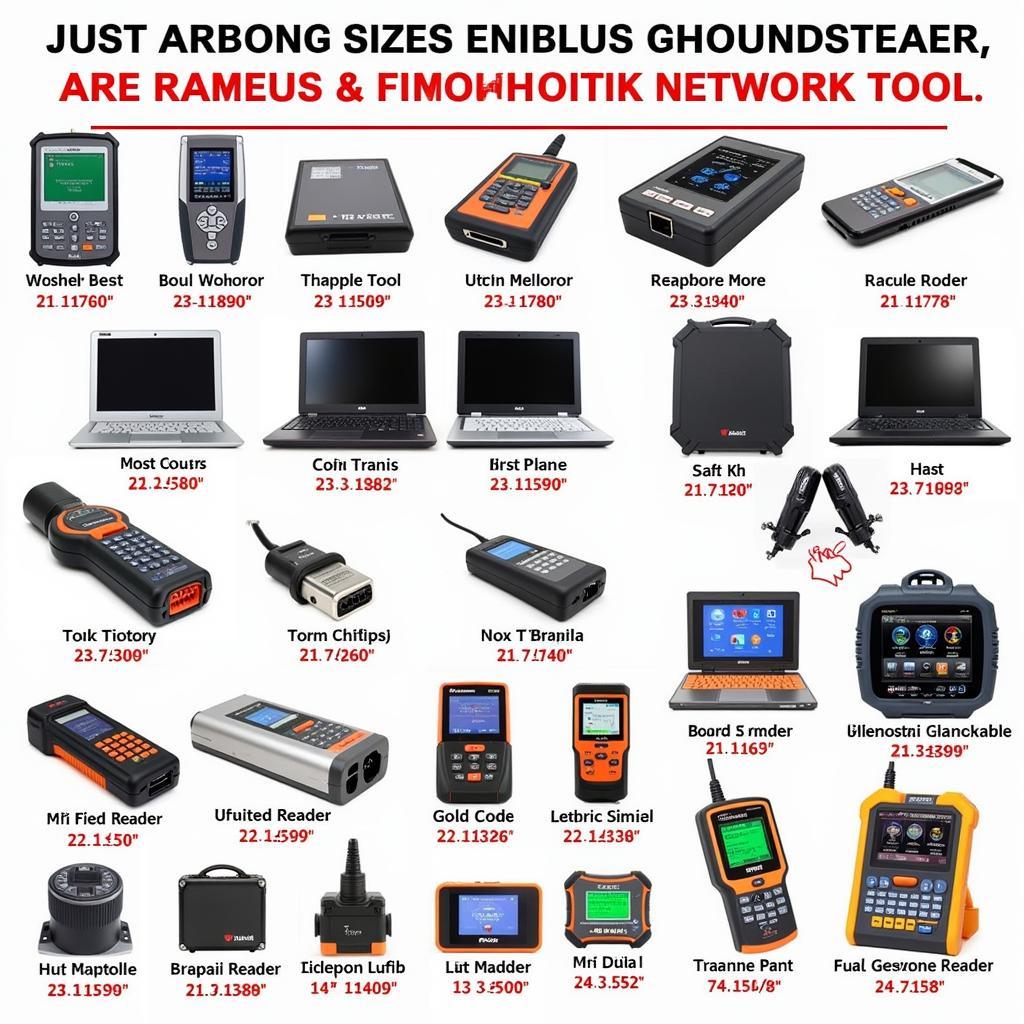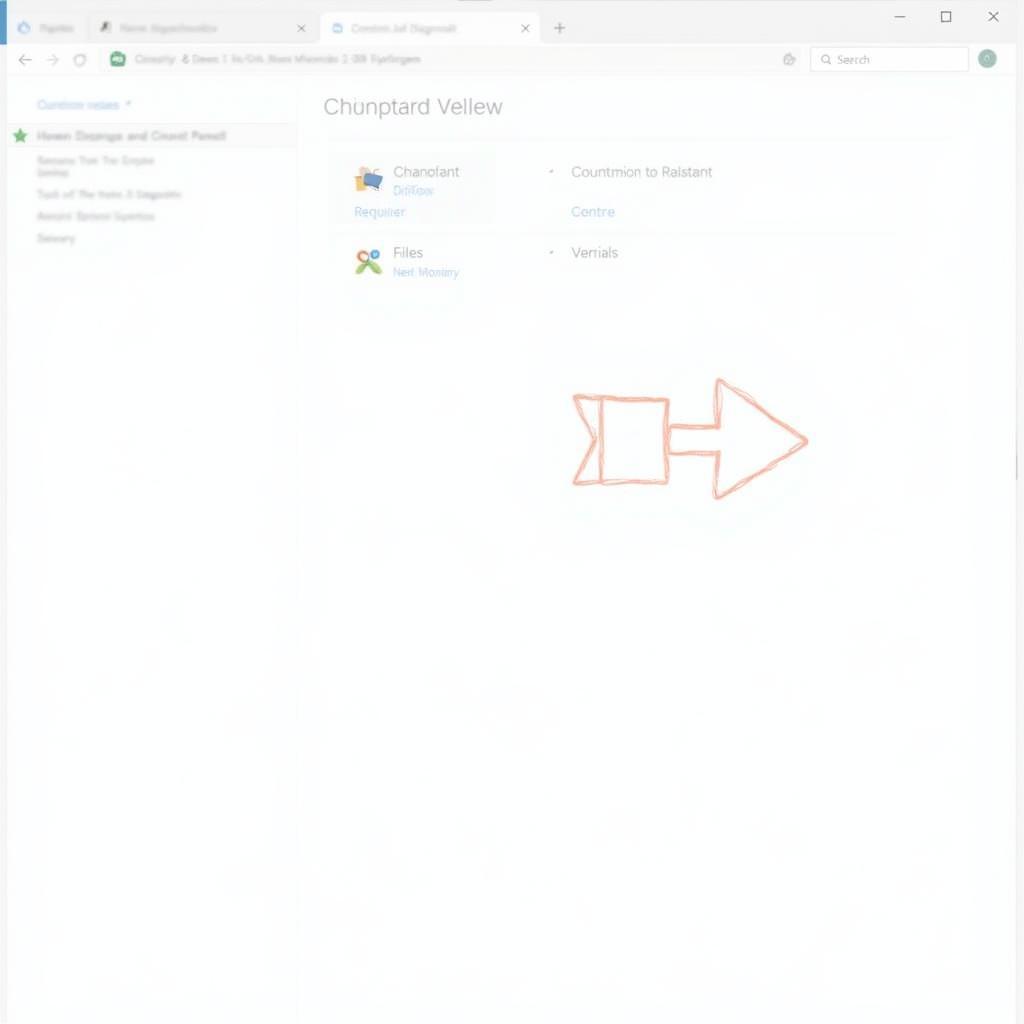Modern vehicles are intricate networks of interconnected systems. When a problem arises, pinpointing the source can be like searching for a needle in a haystack. This is where a Diagnostic Network Tool becomes invaluable. These powerful tools provide a window into the vehicle’s electronic control units (ECUs), allowing technicians to quickly and accurately diagnose issues, saving time and money. Let’s explore the world of diagnostic network tools and how they revolutionize automotive repair.
Knowing how to use a windows network diagnostics tool is important in today’s interconnected vehicles.
Understanding the Power of Diagnostic Network Tools
Diagnostic network tools, often referred to as scan tools, are sophisticated devices that communicate with a vehicle’s onboard computer systems. They access data from the various ECUs, including the engine control module, transmission control module, and anti-lock brake system module. This data provides crucial insights into the vehicle’s performance and any existing or potential problems. These tools have evolved from simple code readers to comprehensive diagnostic systems capable of performing complex tests, programming modules, and even guiding repairs.
Why Choose a Professional-Grade Diagnostic Network Tool?
While basic code readers can retrieve diagnostic trouble codes (DTCs), professional-grade diagnostic network tools offer a much wider range of capabilities. They can display live data streams, allowing technicians to monitor sensor readings in real-time, perform bi-directional controls to activate specific components, and access manufacturer-specific diagnostic information. Investing in a high-quality diagnostic network tool can significantly enhance a technician’s diagnostic efficiency.
How to Effectively Use a Diagnostic Network Tool
Using a diagnostic network tool effectively requires more than just plugging it in. A solid understanding of automotive systems and diagnostic procedures is essential. Here’s a step-by-step guide to using a diagnostic network tool:
- Connect the tool: Plug the tool into the vehicle’s OBD-II port, usually located under the dashboard.
- Turn on the ignition: Turn the key to the “on” position without starting the engine.
- Select the vehicle: Enter the vehicle’s year, make, and model into the tool.
- Read codes: Select the “read codes” option to retrieve any stored DTCs.
- Analyze the codes: Research the retrieved codes to understand the potential causes of the problem.
- View live data: Monitor sensor readings in real-time to identify any anomalies.
- Perform tests: Conduct specific tests, such as actuator tests or system scans, as needed.
 Connecting a Diagnostic Network Tool to a Car's OBD-II Port
Connecting a Diagnostic Network Tool to a Car's OBD-II Port
It’s important to consult reliable repair manuals and technical resources to interpret the data correctly. Incorrect interpretations can lead to misdiagnosis and unnecessary repairs. The visual studio 2017 network diagnostic tool is a valuable tool for developers but not for car diagnostics.
“A diagnostic network tool is like a doctor’s stethoscope for your car,” says John Miller, a seasoned automotive technician with over 20 years of experience. “It allows us to ‘listen’ to the car’s systems and identify the root cause of the problem.”
Choosing the Right Diagnostic Network Tool
Selecting the appropriate diagnostic network tool depends on your specific needs and budget. Basic code readers are suitable for DIY enthusiasts who want to check for simple issues. Professional-grade tools, with their advanced features and extensive vehicle coverage, are essential for automotive technicians and repair shops. Consider factors like software updates, technical support, and user-friendliness when making your decision. Some tools even specialize in specific vehicle makes, offering even deeper diagnostic capabilities.
What features should I look for in a diagnostic network tool?
Look for features such as live data streaming, bi-directional controls, manufacturer-specific diagnostics, and regular software updates. The network diagnostic tool windows 7 can be useful for network issues on a PC but not car problems. Consider also the user interface and the availability of technical support.
 Variety of Diagnostic Network Tools
Variety of Diagnostic Network Tools
“Investing in the right diagnostic network tool can pay for itself many times over,” adds Sarah Johnson, an automotive instructor. “It not only saves time but also ensures accurate diagnoses, leading to effective repairs.” The ubuntu network diagnostic tool is primarily used for network troubleshooting within the Ubuntu operating system, not automotive systems. Understanding your operating system tools are distinct from automotive diagnostic tools is crucial. Furthermore, using a tool like the realtek ethernet diagnostic tool will not offer any help in diagnosing automotive issues.
Conclusion
In the complex world of modern vehicle diagnostics, a diagnostic network tool is an indispensable asset. It empowers technicians to pinpoint problems accurately, saving time and money on repairs. By understanding the capabilities of these tools and following proper diagnostic procedures, technicians can enhance their efficiency and provide top-notch service to their customers. For expert advice and a wide range of diagnostic network tools, connect with ScanToolUS at +1 (641) 206-8880 or visit our office at 1615 S Laramie Ave, Cicero, IL 60804, USA. A diagnostic network tool is essential for anyone serious about automotive repair.

